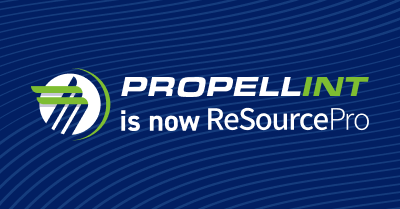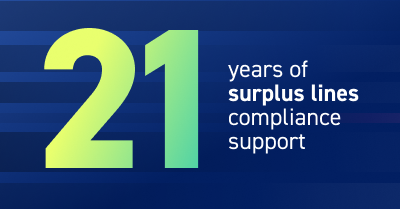What weathers all financial downturns, even a pandemic, and is part of the evolution of technology? Deb Smallwood, Senior Partner, Carrier Transformation of Strategy Meets Action, a ReSource Pro company, can say with confidence that the answer is P&C insurance.
“We work in an amazing industry,” she said. “Financially strong and operating true to its mission, a promise of financial security and protection to customers, employees, and society.”
While Deb has spent her entire career in the P&C industry, she continually finds new opportunities to explore the many sides of the industry: starting at Liberty Mutual in IT, then becoming partner at KPMG, and eventually founding her own consultancy, Strategy Meets Action. The firm was recently acquired by ReSource Pro, and we’re thrilled to share her insights as an industry vet with a career-long devotion to the digital transformation of carriers.
Keep reading to learn what business challenges Deb says the pandemic exposed for carriers as well as the top misconception about boosting performance.
INSURANCE’S TRANSFORMATION FROM THE 1980S TO TODAY
How did you first get involved in insurance?
I entered the insurance industry at the beginning of the automation evolution, when computers and programming were emerging and automating manual tasks was the focus. Most large insurance companies had entry-level COBOL programming classes for college graduates with no computer background. The strategy was to accelerate hiring to build out an expanding IT department with in-house training.
When I graduated college, my mother’s words of wisdom were, “You need to work in a large company and with computers.” So when Liberty Mutual announced its training program, I applied and got the job. And I have never looked back.
Fast forward to today, and we’re still automating the manual processes with automation—but today it’s with artificial intelligence, advanced analytics and data, and intelligent workflows and rules instead of COBOL code.
Since then, how has automation advanced the industry?
Let’s talk underwriting. Underwriters had typewriters and paper—no computers. They’d manually look up a class code and a rate and do manual calculations. Then they’d type up multiple copies of the policy or use carbon copy because they didn’t even have copy machines!
I was on one of the first policy admin systems that was rolled out in the country that IBM built for Liberty Mutual. It took years before the underwriters trusted the system. Carriers are still buying and implementing policy admin systems that, from a core capability perspective, are similar to what we were automating in the 1980s.
However, they are more sophisticated, with workflows and rules engines. You can start to layer in RPA (robotic process automation) or new data sources coming in, so that people don’t have to manually input all the information. You can start to use predictive analytics for more sophisticated rating and pricing. And the technology is no longer one big, monolithic set of COBOL programs, but instead microservices, low-code, configurable, and in the cloud. It’s remarkable how both the business and technology capabilities have advanced.
The evolution has been incredible. However, there’s still lots of opportunity to transform and evolve the business and technology.
What’s an area of insurance that continues to be done manually?
Let’s stay on underwriting. Personal lines and small business are highly automated. However, for commercial lines middle market, complex risks still have manual workflows and use basic spreadsheets and standalone tools.
Underwriting—risk evaluation and pricing, and negotiating with the agent or broker—is layered with complexity, from compliance, to the art of underwriting, to relationship management. Yet it’s also ripe for varying levels of automation. For example, it’s 2021 and underwriters are rekeying data in spreadsheets, and agents are still submitting multimillion dollar business to carriers with emails and PDFs.
CHALLENGES FOR INSURANCE CARRIERS IN 2021
What misconceptions do insurance organizations have about how to improve their performance?
Everything doesn’t have to be a big, multi-year, multimillion-dollar project. Insurance is very product centric, internally focused, and transaction focused. But when you flip the perspective to a customer experience and understand their journey and expectations, it changes the priority and focus.
Things as simple as how someone answers a phone or the way you send an invoice make significant impact to the customer experience and your operations. If you can simplify a bill, people will call less and pay on time, improving operations as well. If you can answer the phone when someone files a claim by asking, “Is any one hurt, do you need a tow?,” instead of the transactional elements of name and address, vehicle, date of the accident, customers will have an amazing claims experience that keeps them happy and renewing.
“Everything doesn’t always have to be big and IT-driven. Flip the lens and you can find some low-hanging fruit that is transformational.”
Everything doesn’t always have to be big and IT-driven. Just flip the lens and you can find some low-hanging fruit that is transformational. And when you apply some of the more advanced technologies, the leap forward is transformative.
What do you think insurance organizations learned from 2020?
In the first eight weeks of the pandemic, we saw how the whole world exploded in digital. The pandemic exposed the gaps in our digital readiness. There is still a lot of paper coming in and going out, especially in claims, medical payments, and legal. It shows how vulnerable we are, because while most of the workforce became virtual nearly overnight, they still needed people in the office to push and process the paper.
“The pandemic exposed the gaps in our digital readiness. There is still a lot of paper coming in and going out.”
The pandemic has forced carriers to rethink their investments in 2021, like digital payments, digital platforms for self-service, and cloud data storage to minimize their footprint in data centers. Carriers are now thinking differently about the people, the processes, and the level of information.
What keeps insurers from going digital more quickly?
There’s so much still to be done. The list of projects and investments is endless. It’s difficult to know where to start, what will have the biggest impact on customers and operations, and in some cases, what fundamental core technologies need to be upgraded.
At Strategy Meets Action, we help business executives take a step back and think out five to 10 years, define the north star guiding them, then build their transformational roadmap and make the right operational and technologies decisions at the right time to move forward.
How do you stay abreast of new technologies and innovations?
At Strategy Meets Action, we conduct primary, survey-based research. We are constantly learning as part of our business model. Every time we talk to our clients, both carriers or vendors, we’re exchanging ideas and all learning and moving forward together. Today I had a three-hour virtual strategy session with a client, and I visualized the image of how they could transform their company and its value to customers. We love coming up with strategies and connecting the dots.
FOUNDING STRATEGY MEETS ACTION
How did you decide to found your own company?
I never set out to own my own business. I never focused on the barriers of being a female executive. I always saw opportunities and would say to myself, “Why not me?” I left a great career at Liberty Mutual to be a consultant at KPMG, and in 18 months made partner because I thought, “Why not me?” I eventually reached a point in my career where I thought, if I can offer something better than what we’re doing, why not start a business?
“Business leaders need to understand and embrace the power of technology and be part of the experience of leveraging it to transform the business.”
I believed I could offer something better than what was being offering in the marketplace. Rather than doing advice, research, and strategic thinking just for IT departments, why not make it available to business executives? Technology is an enabler, not a driver. I believe business leaders need to understand and embrace the power of technology and be part of the experience of leveraging it to transform the business.
Deb Smallwood is leading the Carrier Transformation practice at Strategy Meets Action, a ReSource Pro company. Looking to bring clarity to your business strategy and make informed decisions about your digital transformation technology? Contact us.



